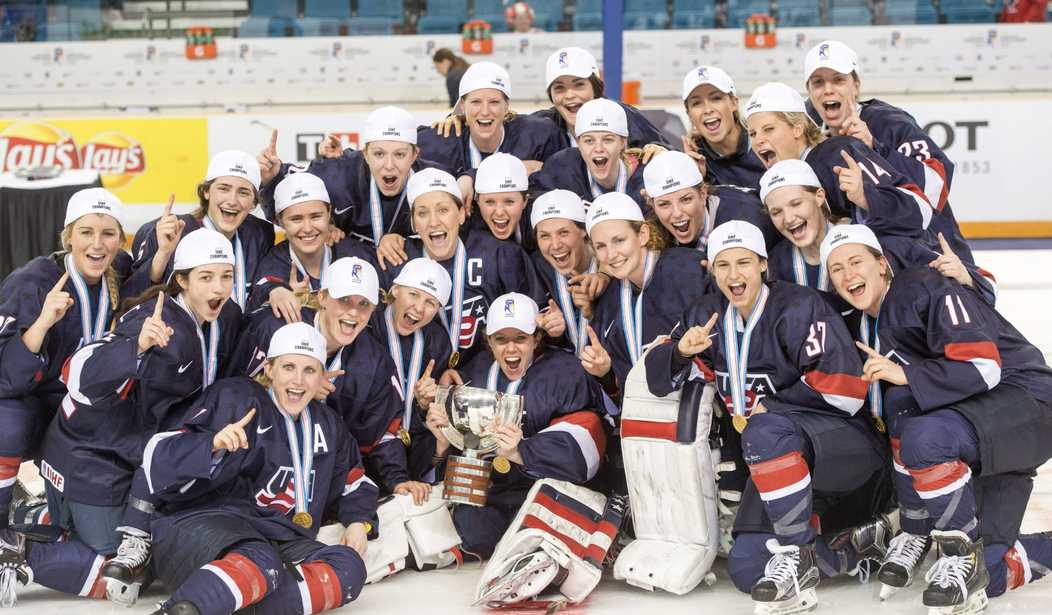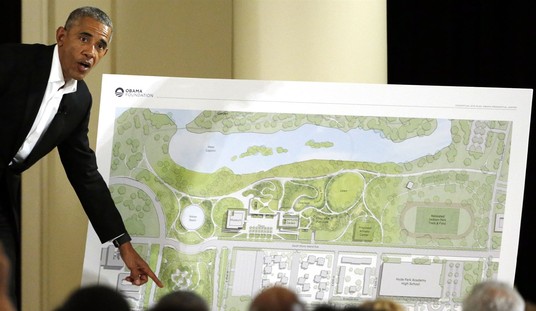The U.S. Women’s National Hockey Team announced on Wednesday that they will boycott the championships later this month—the very games where they would be defending their title as reigning world champions. For the seventh year in a row. The team has decided to protest USA Hockey in response to the organization’s hedged negotiations concerning “fair wages and equitable support.” While fair wages and equal pay for women have been written and rewritten into law since the Equal Pay Act (EPA) of 1963 (most notably again in the Lilly Ledbetter Fair Pay Act signed by the Obama administration in 2009), a contradictory Department of Labor study warned against liberal application of the EPA without analyzing the reasons for pay discrepancies.
A summary of the 2007 study states:
Although additional research in this area is clearly needed, this study leads to the unambiguous conclusion that the differences in the compensation of men and women are the result of a multitude of factors and that the raw wage gap should not be used as the basis to justify corrective action. Indeed, there may be nothing to correct. The differences in raw wages may be almost entirely the result of individual choices being made by both male and female workers.
While there are legitimate laws stating that, for instance, professional athletes of both genders should be earning the same amount of base pay, it’s not happening. And that probably won’t change anytime soon. For the 2015-2016 season, the league minimum salary for the NBA was $525,000. The previous season league minimum for the WNBA? $38,000. Granted, the WNBA regular season is only 34 games compared to the 82-game lineup for the NBA, but even the lowest reported paid player in the NBA makes nearly five times as much as the highest-paid WNBA player. The rationale behind the insane wage discrepancy, even with the season length and game distribution? One conjecture could easily be based on the earning potential of the individual associations. According to an article reported by Newsweek in 2016, the NBA brought in over $5 billion—with Turner Sports and ESPN paying a combined $2.6 billion annually to the NBA for televised game rights. ESPN’s annual commitment to the WNBA? $12 million—less than half a percent of the contract with the NBA.
The only real exception to this seems to be prevalent in the world of tennis, where nearly everyone has heard of the Williams sisters and Maria Sharapova. But even though prize money for all four Grand Slam events (the Australian, French, and U.S. Open alongside Wimbledon) is equal for men and women athletes, the salary divergence between players is still apparent. Both top players for the Women’s Tennis Association (WTA) and the men’s Association of Tennis Professionals (ATP) should be comparable. Yet Serena Williams (no. 1 career earner in the WTA) has a reported career total of $84,463,131 compared to Novak Djokovic’s career total of $107,958,527 reported by the ATP in February of 2017.
Protest all you want, ladies. But demanding fair wages just isn’t going to work. USA Hockey isn’t on your side (in fact, they are actively recruiting your replacements). The law isn’t really on your side. And the majority of sports fans aren’t on your side, either. Why? Because women’s athletics simply don’t matter to the general population of sports enthusiasts. Women’s teams are often the butt of terrible jokes. Women’s sporting events—at both the college and national levels—rarely see any broadcast time. And when the games are televised, you’ll never find them on major networks during prime viewing hours.
So what should you be demanding for yourselves, for your team, and for female athletes across the entire arena? Equal representation. Equal publication. Equal promotion. This isn’t a fair wage issue. It’s an unfair PR issue. No, you can’t expect or reasonably ask the public to change their attitudes or adjust their lack of enthusiasm when it comes to your chosen sport. But your organization sure could equally distribute their budget to promoting and marketing sporting events for both ends of the athletic gender spectrum.
If you still think protesting USA Hockey and pursuing fair pay in the name of equality is the way to go, sit out and throw away your shot at your seventh consecutive championship. The majority of the world won’t even notice. But what if the majority of the world did notice? What if your talent, dedication, and passion for sports were taken seriously because there were supported and presented seriously?
Any red-blooded American, football fan or not, knows what the Super Bowl is. They typically know when it’s held, and even the most oblivious observer knows what teams are playing in American football’s biggest day of the season. The same can be said for college basketball when the NCAA championship playoffs start. If you watch TV, work in an office, or peruse Facebook with any sort of regularity, you know at least one or two people who have already busted their March Madness brackets. What if the promotion of your playoff and championship games received the same publicity? What if there were hype and support created for you the same way the men in your chosen sport are given? Do you think there would still be an issue concerning equal pay and fair wages? If there were, it’s safe to say your fans wouldn’t stand for it. Your fans that would be guided to you by equal advertising, sponsorship, and marketing.
Female athletes don’t make as much as their male counterparts. There are plenty of ambiguous justifications for this wage gap, and those rationalizations will likely maintain the status quo. The U.S. Women’s Hockey Team is valiantly trying to vocally protest this injustice, and while they have every right to protest and demand fair wages, that will remain a moot point if women’s sports continue to be neglected by their governing organizations.









Join the conversation as a VIP Member